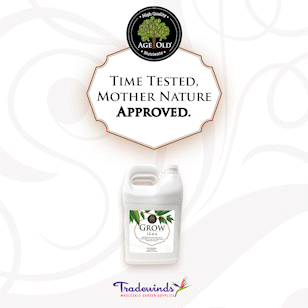
There’s nothing quite like the flavor and fragrance of freshly harvested herbs in your cooking, and with the right techniques, you can enjoy a high-yield indoor herb garden year-round. Whether you’re a seasoned gardener or a novice with a green thumb, cultivating herbs indoors can be a rewarding and sustainable hobby. In this article, we’ll explore the techniques involved in creating a thriving indoor herb garden, along with three herbs that grow exceptionally well indoors.
Techniques for Success
Choose the Right Location: Herbs require plenty of light to thrive. Select a sunny location for your indoor herb garden. South-facing windowsills are ideal, as they receive the most sunlight throughout the day. Alternatively, you can use grow lights to supplement natural light.
Select Suitable Containers: Opt for well-draining containers with drainage holes to prevent overwatering. Terra cotta, ceramic, or plastic pots work well. Ensure your pots are appropriately sized for the herbs you want to grow.
Use Quality Soil: Herbs prefer a lightweight, well-draining potting mix. A mixture of potting soil and perlite or vermiculite can provide the ideal growing medium.
Water Wisely: Herbs generally prefer to be kept consistently moist but not waterlogged. Water when the top inch of soil feels dry, and always water the base of the plants to avoid splashing the leaves.
Maintain Proper Humidity: Indoor air can be dry, especially during the winter months. Mist your herbs occasionally or use a humidity tray to maintain adequate moisture levels.
Pruning and Harvesting: Regular pruning encourages bushier growth and more prolific harvests. Harvest herbs when they reach a suitable size, typically a few inches tall. Be sure not to remove more than one-third of the plant at a time.
Fertilize Sparingly: Herbs are not heavy feeders. Use a balanced, diluted liquid fertilizer every 4-6 weeks during the growing season to provide essential nutrients.
Top Three Herbs for Indoor Growth
Basil (Ocimum basilicum)
Basil is a popular herb known for its aromatic leaves that add a burst of flavor to salads, pasta dishes, and sauces.
Growing Tip: Keep basil in a warm and sunny spot and pinch off the flowers as they appear to encourage leaf growth.
Mint (Mentha spp.)
Mint is a versatile herb with a refreshing taste, perfect for teas, cocktails, and desserts.
Growing Tip: Mint is an aggressive grower, so it’s best to keep it in its container to prevent it from spreading too much. It thrives in partial sunlight.
Parsley (Petroselinum crispum)
Parsley is a staple in many culinary dishes, providing a fresh and slightly peppery flavor.
Growing Tip: Parsley prefers bright, indirect light and consistently moist soil. It can take a bit longer to germinate, so be patient.
Conclusion
Cultivating a high-yield indoor herb garden requires attention to detail, but the rewards are well worth the effort. With the right techniques and a little patience, you can enjoy a continuous supply of fresh herbs for your culinary creations. Whether you choose basil, mint, parsley, or any other herbs that thrive indoors, you’ll not only enhance the flavors of your dishes but also connect with the joys of gardening year-round.
Related Articles & Free Email Newsletter Sign Up
How to Grow and Preserve Herbs
How to Grow Herbs Indoors for Year-round Enjoyment




Comment here